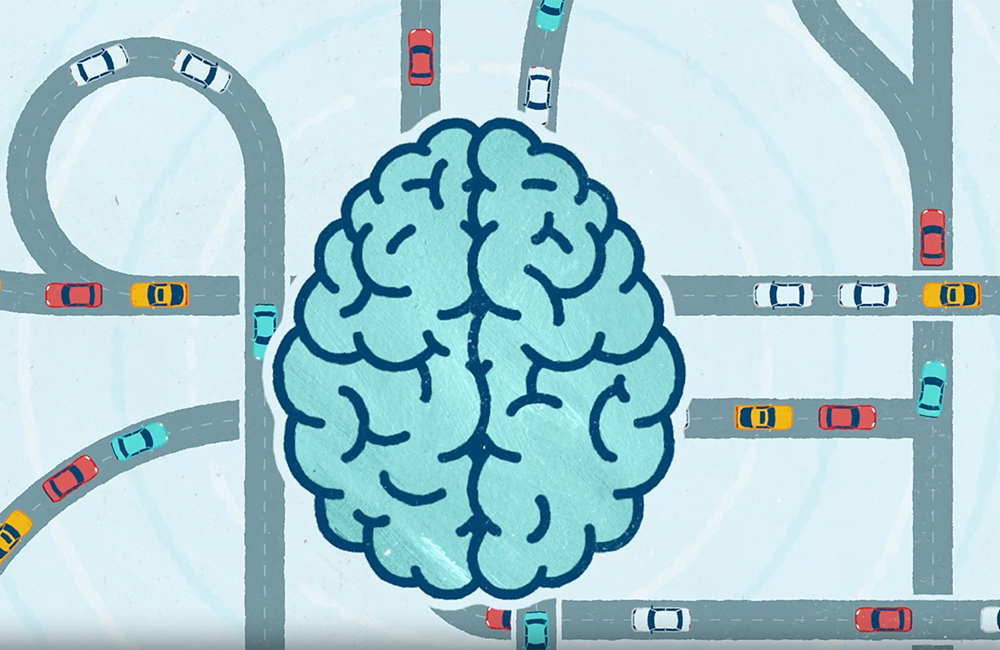 Aaron Fobian, Ph.D., first encountered patients with functional neurological disorder while she was in her clinical psychology internship. There were no good pediatric treatments for the disorder, so Fobian started to develop her own approach and, eventually, a clinic at UAB that has treated hundreds of patients.Like many people who are eventually diagnosed with functional neurological disorder, a young woman named Brielle found herself dealing with a sudden health issue that eventually swallowed her life.
Aaron Fobian, Ph.D., first encountered patients with functional neurological disorder while she was in her clinical psychology internship. There were no good pediatric treatments for the disorder, so Fobian started to develop her own approach and, eventually, a clinic at UAB that has treated hundreds of patients.Like many people who are eventually diagnosed with functional neurological disorder, a young woman named Brielle found herself dealing with a sudden health issue that eventually swallowed her life.
What “started as chest pain, tics and seizure-looking episodes” eventually “affected my entire body,” she said. “I wasn’t able to go to school and wasn’t able to get any answers. I lost my memory and wasn’t able to talk.” These terrifying symptoms “were happening multiple times a day, every couple of hours, and they would last two minutes to an hour,” Brielle said. “They took over my existence.”
But weeks after Brielle began Retraining and Control Therapy, or ReACT, with UAB clinical psychologist Aaron Fobian, Ph.D., everything changed. “I feel like I am back to what I may have been before, if not an even better version of myself,” Brielle said in a video on the website ReACTfnd.health.
A whirlwind several years
The website is the latest evolution in what has been a whirlwind several years for Fobian, an associate professor in the Department of Psychiatry and Behavioral Neurobiology in the UAB Heersink School of Medicine, who has treated hundreds of pediatric and adult patients using ReACT.
Functional neurological disorder affects an estimated 300,000 Americans and can begin from adolescence to anytime throughout life. Many patients, especially adolescents such as Brielle, suffer from a subtype known as functional seizures, or psychogenic non-epileptic seizures. As that name implies, the seizures do not come with the characteristic spike and sharp brain waves on EEG monitoring that are seen in patients with epilepsy. Across countries and cultures and across the decades, symptoms of functional neurological disorder are similar, although the symptoms can vary by culture, Fobian said: “By the time we see them, many of our children and adults have had these symptoms for a long time.”
Fobian first encountered patients with functional neurological disorder while she was in her clinical psychology internship at Texas Children’s Hospital in 2012 and 2013. There were no good pediatric treatments for the disorder, so Fobian started to develop her own approach, based on cognitive behavioral techniques. That approach clearly produced results and formed the basis for Fobian’s postdoctoral research at UAB, and ReACT.
In 2018, Fobian helped to begin an interdisciplinary treatment program at UAB to treat patients with functional neurological disorder. In 2020, she published the results of a 29-participant trial of ReACT — the first randomized controlled trial of any treatment for pediatric functional seizures.
The positive results of that study led to two major NIH grants in 2021 and 2023. The first, from the National Institute of Mental Health, is funding patient research into the mechanisms underlying ReACT’s success. The second grant, from the National Center for Complementary and Integrative Health, is funding a multisite clinical feasibility trial of ReACT at UAB, Yale University and Baylor College of Medicine/Texas Children’s Hospital (with an even larger, NIH U-grant-funded efficacy trial hopefully to follow). Both studies began enrolling participants in March 2024.
Also in 2021, Fobian received funding from UAB’s HSF-GEF awards program to hire a program coordinator and expand the interdisciplinary treatment program by creating a defined treatment pathway for patients with functional neurological disorder at UAB and Children’s Hospital. Over the past 12 months, the Interdisciplinary Functional Neurological Disorder Treatment Program has treated 210 patients.
Meanwhile, Fobian has received a constant stream of emails from clinicians and patients around the world wanting to be trained in ReACT or become part of a trial; she also regularly speaks to clinician groups, including an educational session this spring for National Health Service psychologists in Scotland.
 In functional neurological disorder, or FND, the normal pattern of communication between brain regions can be disrupted by experiences such as illness or injury, requiring them to find alternative routes, like a highway detour caused by road construction. ReACT therapy works to retrain the brain away from these faulty routes. Screenshot from ReACTfnd.health site.
In functional neurological disorder, or FND, the normal pattern of communication between brain regions can be disrupted by experiences such as illness or injury, requiring them to find alternative routes, like a highway detour caused by road construction. ReACT therapy works to retrain the brain away from these faulty routes. Screenshot from ReACTfnd.health site.Fobian called her treatment Retraining and Control Therapy to capture its effects on patients’ brains — and their minds. As a video on the ReACTfnd.health site explains, functional neurological disorder “is a brain network disorder in which communication between the brain and body is altered.” The normal pattern of communication between brain regions can be disrupted by experiences such as illness or injury, requiring them to find alternative routes, like a highway detour caused by road construction, Fobian says. But after that temporary obstacle is removed, the brain can persist in using these detour routes, “causing altered physical functioning.”
ReACT works to retrain the brain away from these learned, faulty routes, and to give patients back their sense of control over functional seizures, tics and other functional symptoms that they feel powerless to stop. “The most helpful part of treatment for me was probably being able to realize that I was able to control my FND,” Brielle said.
Patients with FND may experience a wide range of symptoms that can vary considerably from patient to patient and even visit to visit. And, as Brielle said in the video, even though she was able to see massive improvements with treatment, “it definitely got worse before it was able to get better.”
"A labor of love"
Most behavioral health therapies are “manualized,” with a strict flow and that practitioners must follow. But ReACT, like functional neurological disorder, adapts from patient to patient and even from session to session if patients develop new symptoms, Fobian says. In training the UAB clinical psychology doctoral students who help her see patients in the FND Treatment Program, Fobian has built out a complex adaptive digital treatment manual, called the ReACT Precision Treatment Tool. She contracted with a local design firm to create the Precision Treatment Tool at ReACTfnd.health.
The Precision Treatment Tool includes separate workflows for pediatric and adult patients. In addition to clinician instructions, there are educational pages for patients and caregivers, forms for treatment planning, parent planning, back-to-school and back-to-work planning, and more, along with the ability to copy and paste the results into a clinician’s electronic medical records system.
“For me, it has been a labor of love,” she said. “Getting involved in functional neurological disorder research resulted in an entirely new plan for my career. I am grateful to be able to be developing and refining this treatment for functional neurological disorder.”